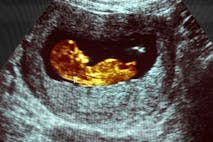
Vietnamese Catholics widen support for pregnant mothers
Angeline Tan
·
Guest Column·By Michael J. New
Mainstream media misleads on preliminary Guttmacher abortion estimates
(National Review) [On September 7], the Guttmacher Institute released new abortion estimates for the first six months of 2023. Their findings purportedly indicate that there has been an abortion increase since the Dobbs decision. The Guttmacher estimates indicate that, when compared to the first six months of 2020, approximately 46,000 more abortions took place in 2023 — an increase of approximately 9.9 percent. These new abortion estimates have already been covered by a number of media outlets, including the New York Times, Yahoo News, the Hill, CNN, and NPR. Unsurprisingly, the mainstream-media spin has been that pro-life laws enacted since the Dobbs decision have been in effective at reducing the incidence of abortion.
Unsurprisingly, there is much less here than meets the eye. This is for several reasons. First, these new abortion estimates are based on samples of abortion facilities, not comprehensive surveys. Guttmacher provides 90 percent confidence intervals that often reflect a great deal of potential variance in their state-level abortion estimates. For Georgia, their upper abortion estimate is over 80 percent higher than their low estimate. For Florida, their upper estimate is more than 11,000 abortions higher than their low estimate. This much variation raises serious questions about the accuracy of their estimates.
Additionally, not all of the abortion increases in politically liberal states are due to more out-of-state women seeking abortions. Part of the increase is likely due to a recent national trend.
Between 2017 and 2020, data from both the CDC and Guttmacher found a slight increase in the incidence of abortion. Also, part of the increase can be attributed to some blue states’ having made their abortion policy even more permissive. In recent years Illinois, Maine, and Rhode Island have all started to cover elective abortion through their respective state Medicaid programs. Finally, part of the increase is likely due to CDC policies that have made chemical abortions easier to access — specifically, policies allowing women to obtain chemical-abortion pills without an in-person medical exam.
Article continues below
Dear Reader,
In 2026, Live Action is heading straight where the battle is fiercest: college campuses.
We have a bold initiative to establish 100 Live Action campus chapters within the next year, and your partnership will make it a success!
Your support today will help train and equip young leaders, bring Live Action’s educational content into academic environments, host on-campus events and debates, and empower students to challenge the pro-abortion status quo with truth and compassion.
Invest in pro-life grassroots outreach and cultural formation with your DOUBLED year-end gift!

Overall, plenty of reliable data collected since the Dobbs decision show that thousands of lives have been saved by strong state-level pro-life laws. The #WeCount project, sponsored by the Society of Family Planning, attempts to count — not estimate — the number of abortions that have been performed since July 2022. They have consistently found that tens of thousands of fewer abortion have taken place since Dobbs. Also, my November 2022 Lozier Institute study and a June 2023 article in the Journal of the American Medical Association both show that the Texas Heartbeat Act has resulted in over 1,000 more children being born every month in the Lone Star State.
Downplaying the impact of protective pro-life laws has been a longtime strategy for supporters of legal abortion and their allies in the mainstream media. However, a substantial body of academic research shows that the incidence of abortion is sensitive to its legal status. Furthermore, many studies show that even incremental pro-life laws lower abortion rates and save lives. Overall, pro-lifers should not be distracted or discouraged by this latest Guttmacher study. Good research shows post-Dobbs pro-life laws have been effective at protecting both mothers and preborn children. As always, pro-lifers would do well to stay the course.
Editor’s Note: This article was published at National Review and is reprinted here with permission.
Live Action News is pro-life news and commentary from a pro-life perspective.
Contact editor@liveaction.org for questions, corrections, or if you are seeking permission to reprint any Live Action News content.
Guest Articles: To submit a guest article to Live Action News, email editor@liveaction.org with an attached Word document of 800-1000 words. Please also attach any photos relevant to your submission if applicable. If your submission is accepted for publication, you will be notified within three weeks. Guest articles are not compensated (see our Open License Agreement). Thank you for your interest in Live Action News!

Angeline Tan
·
Human Interest
Andrea Trudden
·
Politics
Stefano Gennarini, J.D. and Kelly Heilman, J.D.
·
Politics
Right to Life UK
·
Guest Column
Unplanned Stories
·
Guest Column
Rai Rojas
·
Guest Column
Michael J. New
·
Guest Column
Michael J. New
·
Guest Column
Michael J. New
·
Guest Column
Michael J. New
·
Guest Column
Michael J. New
·